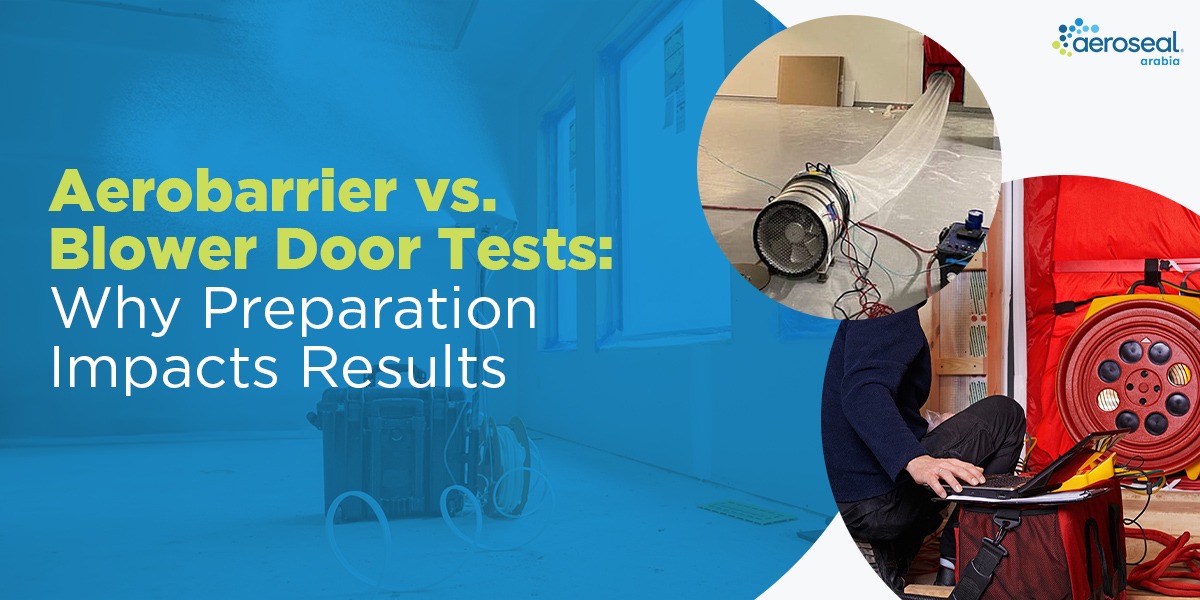
Aerobarrier vs. Blower Door Tests: Why Preparation Impacts Results
In modern construction, air sealing and airtightness testing play a critical role in building performance, energy efficiency, and occupant comfort. Two key methods often come up in conversation the Aerobarrier sealing system and the Blower Door test. While both are essential tools for managing air leakage, they serve very different purposes. Understanding how they work and why preparation matters helps contractors, engineers, and building owners achieve better long-term results.
Understanding the Difference
The Blower Door test is a diagnostic tool designed to measure how airtight a building is. It uses a large fan and pressure sensors installed in a door frame to pressurize or depressurize the building. This helps identify how much air is leaking through cracks, joints, or penetrations in the building envelope.
On the other hand, Aerobarrier is an advanced air sealing technology. It doesn’t just identify leaks it seals them automatically. Using a mist of water-based sealant particles, Aerobarrier distributes the material through the air under controlled pressure. As the mist moves through the space, the particles seal leaks up to ½ inch wide, creating a tight and durable barrier.
In short, the Blower Door test measures air leakage, while Aerobarrier fixes it.
Why Preparation Matters
Proper preparation determines how accurate and effective both processes will be. When technicians prepare a building for testing or sealing, they ensure that all intentional openings such as vents, drains, and mechanical penetrations are sealed off correctly. Any overlooked detail can distort results or limit the sealing effectiveness.
For the Blower Door test, poor preparation can lead to inaccurate readings. For example, if doors or windows are not properly latched, or if temporary seals are missing, the results may show higher air leakage than the building actually has.
For Aerobarrier, preparation is even more critical. Since the technology works by pressurizing the space, any open vents, drains, or unsealed penetrations can allow the sealant to escape instead of filling gaps. Proper masking and setup ensure that the sealant only targets unwanted leaks not essential ventilation paths.
The Step-by-Step Process
- Pre-inspection: Before any test or sealing process, technicians inspect the space for obvious gaps, missing seals, or construction debris that could affect results.
- Masking and sealing intentional openings: Supply and return vents, exhaust fans, and drains are temporarily sealed to prevent unwanted airflow.
- System calibration: The blower fan is calibrated to achieve the target pressure level, whether for testing or sealing.
- Leak detection or sealing phase:
- In a Blower Door test, technicians use smoke pencils, infrared cameras, or pressure sensors to detect leaks.
- In Aerobarrier, the system disperses sealant mist while maintaining constant pressure until the desired airtightness is achieved.
- Post-verification: A second Blower Door test confirms the improvement in airtightness after sealing.
Comparing the Two Methods
| Factor | Blower Door Test | Aerobarrier Sealing |
| Purpose | Measures airtightness | Seals leaks automatically |
| Technology | Fan and pressure sensors | Pressurized sealant mist |
| Output | Leakage rate (ACH or CFM) | Sealed and verified airtight envelope |
| Ideal Use | Diagnostic or compliance testing | Active air sealing and performance improvement |
| Preparation Importance | High | Critical |
While a Blower Door test is often required to meet code compliance (such as ASHRAE or Saudi Building Code standards), Aerobarrier is a performance enhancement tool. Together, they ensure a building not only passes the test but also maintains long-term efficiency.
The Saudi Perspective
In Saudi Arabia’s growing green building market, precision air sealing is key to meeting sustainability goals under Vision 2030. High humidity, temperature extremes, and strict energy standards make airtight construction essential for maintaining comfort and efficiency.
Using Aerobarrier alongside Blower Door testing helps contractors verify performance, reduce HVAC loads, and meet international certifications like LEED or SBC energy standards. With the right preparation and professional execution, builders can achieve optimal results that last for decades.
Final Thoughts
The difference between an average and an exceptional building often comes down to preparation. Both Aerobarrier and Blower Door tests rely on precision, cleanliness, and expert setup. When done right, the results are transformative tighter buildings, lower energy bills, and healthier indoor environments.
Whether you’re sealing a new commercial tower in Riyadh or testing an existing healthcare facility in Jeddah, preparation is the foundation of airtight success.



